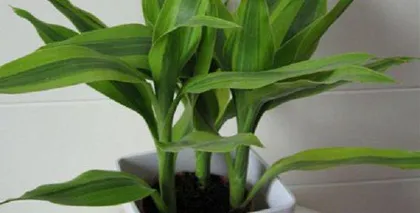Lucky Bamboo: Does it like sun or shade?

In our lives, lucky bamboo, as one of the elegant and graceful bonsai, has been sought after by many people. However, regarding its care methods, some people believe it is a shade-loving plant, while others think it loves the sun. So, does it actually prefer sun or shade? This article will take you for an in-depth exploration.
I: Introduction to Lucky Bamboo
Lucky bamboo, with the scientific name "Kenzhu", is native to southern China and is an evergreen tree. It has a beautiful shape, straight stems, and lush foliage, making it highly ornamental.

II: Classification of Lucky Bamboo
Lucky bamboo is divided into three varieties: green bamboo, yellow bamboo, and black bamboo. Among them, yellow bamboo is considered the best variety due to its vibrant color and high ornamental value.
III: Characteristics of Lucky Bamboo
Lucky bamboo is extremely strong in vitality and highly adaptable. It has a well-developed root system that can absorb a large amount of water and nutrients. Its leaves are hardy, not easy to wither, and not susceptible to pests, giving it a long lifespan.
IV: Does Lucky Bamboo like sun or shade?
In fact, lucky bamboo likes both sun and shade. Although it is a highly adaptable plant, targeted care methods are needed according to its growth characteristics and environmental conditions.

V: Light Requirements for Lucky Bamboo
Lucky bamboo needs sufficient sunlight and can be placed in bright locations outdoors or indoors. Insufficient light will cause the leaves to turn yellow and growth to slow down.
VI: Temperature Requirements for Lucky Bamboo
Lucky bamboo also has certain temperature requirements and is suitable for growth in an environment between 20°C and 30°C. Temperatures that are too low or too high will adversely affect its growth.
VII: Humidity Requirements for Lucky Bamboo
Lucky bamboo requires high humidity because it originates from tropical rainforest regions. If the environmental humidity is too low, it can lead to problems such as dry leaves and cracked stems.
VIII: Watering Requirements for Lucky Bamboo
Lucky bamboo needs sufficient water, but it should not be overwatered. Typically, water it once a week, keeping the soil moist but not waterlogged, otherwise, it will lead to root rot.
IX: Fertilizer Requirements for Lucky Bamboo
Lucky bamboo needs a moderate amount of fertilizer to promote its growth, but do not over-fertilize. You can apply liquid fertilizer once a month, with an appropriate amount.
X: Pruning Lucky Bamboo
Pruning lucky bamboo can promote its growth and make it more beautiful. You can appropriately trim excess branches and leaves to maintain the plant's aesthetic shape.
XI: Pest and Disease Control for Lucky Bamboo
Lucky bamboo is not susceptible to pests and diseases, but it is still necessary to pay attention to prevention. You can add an appropriate amount of insecticide or fungicide when watering to prevent and control pests and diseases.
XII: Suitable Places for Lucky Bamboo
Lucky bamboo is suitable for places with good ventilation and sufficient sunlight, such as living rooms, studies, and offices. If placed outdoors, you can choose a semi-shaded and semi-sunny location.
XIII: Pairing Lucky Bamboo
Pairing lucky bamboo with other plants can create different landscape effects. For example, pairing it with fishtail bamboo can add a sense of layering.
XIV: The Symbolism of Lucky Bamboo
As a common bonsai, lucky bamboo also has its own symbolism. Its name "Fugui" (Wealth and Nobility) represents auspicious meanings such as peace, harmony, and good fortune.
XV: Conclusion
In summary, lucky bamboo likes both sun and shade, but adjustments need to be made according to the actual situation. In the process of care, we also need to pay attention to the requirements for temperature, humidity, fertilizer, and other aspects. It is hoped that through this article, you can learn more about lucky bamboo and do a good job in its care.